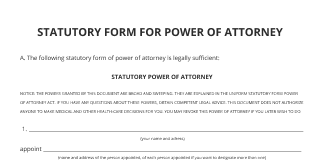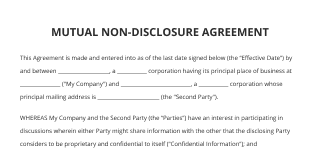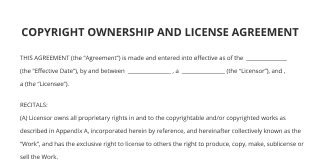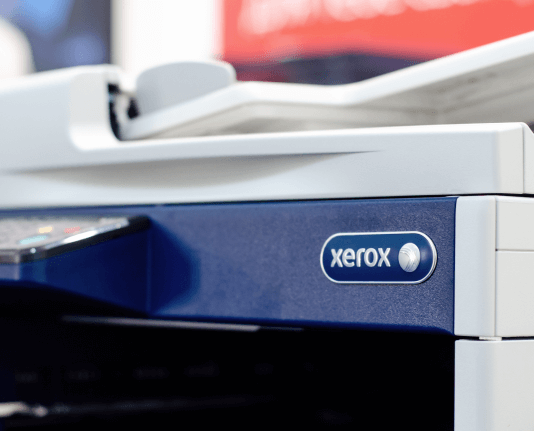Understanding the Difference between Invoice and Sales Receipt for Your Business
Move your business forward with the airSlate SignNow eSignature solution
Add your legally binding signature
Integrate via API
Send conditional documents
Share documents via an invite link
Save time with reusable templates
Improve team collaboration
See airSlate SignNow eSignatures in action
Understanding Invoices
An invoice is a formal document issued by a seller to a buyer, detailing the products or services provided. It typically includes the following information:
- Invoice number: A unique identifier for tracking purposes.
- Date of issue: The date when the invoice is created.
- Seller's information: Name, address, and contact details of the seller.
- Buyer's information: Name, address, and contact details of the buyer.
- Description of goods/services: Detailed list of what was sold, including quantities and prices.
- Total amount due: The total cost, including any applicable taxes.
Invoices serve as a record of the transaction and are often used for accounting and tax purposes. They indicate that payment is expected within a specified timeframe.
Defining Sales Receipts
A sales receipt is a document provided to a buyer after a purchase has been completed. It confirms that payment has been made and typically includes:
- Receipt number: A unique identifier for the transaction.
- Date of purchase: The date when the transaction occurred.
- Seller's information: Name and contact details of the seller.
- Buyer's information: Name and contact details of the buyer (if applicable).
- List of items purchased: Description, quantity, and price of each item.
- Total amount paid: The total cost, including taxes.
Sales receipts are often used for returns or exchanges and serve as proof of purchase.
Key Differences Between Invoices and Sales Receipts
While invoices and sales receipts may seem similar, they serve different purposes in transactions:
- Payment status: An invoice indicates that payment is pending, while a sales receipt confirms that payment has been completed.
- Usage: Invoices are primarily used in business-to-business transactions, whereas sales receipts are common in retail transactions.
- Legal implications: Invoices may be used in legal contexts to enforce payment, while sales receipts are proof of purchase for the buyer.
- Format: Invoices often contain more detailed information about the transaction, including payment terms and due dates, compared to sales receipts.
When to Use Each Document
Choosing between an invoice and a sales receipt depends on the nature of the transaction:
- Use an invoice: When providing services or goods on credit or when payment is not received immediately.
- Use a sales receipt: When a transaction is completed at the point of sale, and payment is received immediately.
Understanding these distinctions helps businesses manage their finances and maintain accurate records.
Practical Applications in Digital Workflows
Using airSlate SignNow, businesses can easily create, send, and manage invoices and sales receipts digitally. This process includes:
- Preparing documents: Quickly generate invoices or sales receipts using customizable templates.
- eSigning: Securely obtain signatures from clients or partners to finalize agreements.
- Sharing documents: Effortlessly send completed invoices or receipts to clients via email or secure links.
These features streamline the transaction process, ensuring that all parties have the necessary documentation for their records.
airSlate SignNow solutions for better efficiency
Our user reviews speak for themselves






Why choose airSlate SignNow
-
Free 7-day trial. Choose the plan you need and try it risk-free.
-
Honest pricing for full-featured plans. airSlate SignNow offers subscription plans with no overages or hidden fees at renewal.
-
Enterprise-grade security. airSlate SignNow helps you comply with global security standards.

Grasping the distinction between invoice and sales receipt
In the realm of business transactions, it is vital to recognize the distinction between invoice and sales receipt. Each document fulfills unique roles in the sales procedure, and knowing when to utilize each can enhance your financial workflows. This guide will lead you through the advantages of utilizing airSlate SignNow for your document signing requirements.
Steps to examine the difference between invoice and sales receipt using airSlate SignNow
- Launch your web browser and head over to the airSlate SignNow site.
- Establish a free trial account or log in if you already possess one.
- Select the document you intend to sign or send for signatures.
- If you plan to reuse this document, save it as a template for future reference.
- Access your document to make any necessary adjustments, like adding fillable fields or inserting specific details.
- Affix your signature to the document and allocate signature fields for your recipients.
- Click 'Continue' to set up and dispatch an eSignature invitation.
airSlate SignNow provides an effective solution for businesses aiming to handle their document signing proficiently. With its extensive feature suite, it delivers great value for your investment, making it user-friendly and scalable for small to medium-sized enterprises. Moreover, the clear pricing structure guarantees no hidden charges, and exceptional 24/7 assistance is provided for all paid plans.
To sum up, grasping the distinction between invoice and sales receipt is crucial for efficient financial management. By leveraging airSlate SignNow, you can streamline your document signing process. Begin your free trial today and discover the advantages firsthand!
How it works
airSlate SignNow features that users love
Get legally-binding signatures now!
FAQs
-
Can I issue a receipt without an invoice?
Is a sales receipt the same as an invoice? While an invoice is a request for payment, a sales receipt is proof the payment was made. It confirms the customer received the goods/services they paid for and the business was appropriately compensated. -
Is a sales receipt an invoice?
Receipts, however, should be issued any time a payment is received from the customer. If you're accepting a payment that is made immediately upon providing the goods or services, you don't need to issue an invoice, but can offer a receipt as proof of payment. This is both for the customer's benefit, and your own. -
Can a receipt be used as an invoice?
An invoice requests payment for goods or services provided, whereas a receipt is issued after payment has been made to confirm the transaction. Therefore, a receipt cannot replace an invoice, as it does not outline payment terms or request payment. -
Is a sales receipt the same as an invoice?
Receipts, however, should be issued any time a payment is received from the customer. If you're accepting a payment that is made immediately upon providing the goods or services, you don't need to issue an invoice, but can offer a receipt as proof of payment. This is both for the customer's benefit, and your own. -
What is the difference between a sales invoice and a sales recipient?
An invoice typically comes before a receipt. An invoice is a document issued by a seller to a buyer that details the products or services sold, the agreed-upon prices, and the terms of the sale. The buyer then uses this information to make a payment, and the seller provides a receipt as proof of payment.
What active users are saying — difference between invoice and sales receipt
Related searches to Understanding the difference between invoice and sales receipt for your business
Get more for difference between invoice and sales receipt
Find out other difference between invoice and sales receipt
- Make the most out of our AI-driven tools to compare ...
- Make the most out of our AI-driven tools to copy ...
- Make the most out of our AI-driven tools to create ...
- Make the most out of our AI-driven tools to create ...
- Make the most out of our AI-driven tools to eSign ...
- Make the most out of our AI-driven tools to eSign Word ...
- Make the most out of our AI-driven tools to extract ...
- Make the most out of our AI-driven tools to fill and ...
- Make the most out of our AI-driven tools to get ...
- Make the most out of our AI-driven tools to insert ...
- Make the most out of our AI-driven tools to save ...
- Make the most out of our AI-driven tools to sign ...
- Make the most out of our AI-driven tools to sign basic ...
- Make the most out of our AI-driven tools to sign ...
- Make the most out of our AI-driven tools to sign it ...
- Make the most out of our AI-driven tools to sign lease ...
- Make the most out of our AI-driven tools to sign online ...
- Make the most out of our AI-driven tools to sign PDF ...
- Make the most out of our AI-driven tools to sign real ...
- Make the most out of our AI-driven tools to sign ...






























